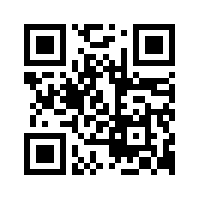


Theme
Social Networking
Category
Resources
INSTITUTION
Department of Anaesthesia, James Cook University Hospital, Middlesborough, UK
By using free, widely availabe, cross platform technology we have presented a novel method for engaging trainees. Our virtual classroom is free from the constraints of a traditional classroom and facilitates discussion at a time and location that is convenient for the trainee. The use of hyperlinking within a tweet enables quick sharing of information, images, documents or podcasts which can easily be organised and saved for later consumption.
Gasclass, which launched in October 2011, is a weekly online case based discussion for use by anaesthetists of all grades. It began as an experiment using new technology in response to a perceived reduction in training opportunity and classroom time by trainees. The challenge was to think of new convenient ways in which an educational conversation could be held whilst removing some of the constraints of a traditional classroom.
The format of the weekly lesson is case based discussion. Initial case details are posted on a blog page but the case discussion takes place using Twitter. Each scenario takes place over 3 or 4 days and invariably ends with some form of clinical conundrum. The discussion increases in difficulty with the opening questions aimed at junior trainees, progressing to further discussion at final FRCA level or above. Scan the QR code to visit our case summary page and hit more detail to see an example conversation.

- Smartphone technology provides an easy way to facilitate an educational discussion.
- We have demonstrated the relative ease in which a world wide virtual classroom can be created.
- A similar model could easily be adopted in other areas of medical education.
We would like to thank all those people who have contributed to gasclass so far & we look forward to contributions from new followers in the future.
.jpg)
 We have had a consistent increase in follower numbers since launch and at the time of writing we have over 460 followers with over 200 people contributing to the actual discusssions.
We have had a consistent increase in follower numbers since launch and at the time of writing we have over 460 followers with over 200 people contributing to the actual discusssions.
We are also able to looking at how many people view the case details each week giving us an idea of the 'class' size even if they do not contribute to the discussion on Twitter. This peeked at over 200 unique hits per day and although some weeks generate more interest than others it has shown good consistency over the 3 terms we have completed so far,
1. Lester O, Updating College communication methods – social networking and Twitter, Royal College of Anaesthetists Bulletin 2011;65: 28-29
 Send Email
Send Email